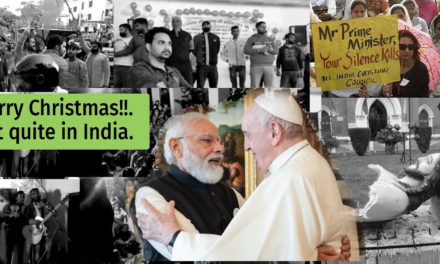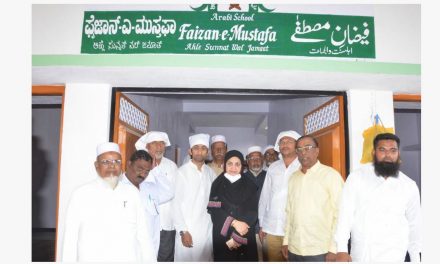1927 Nagpur Riots: Birth of Riot template & the Bloody legacy of engineered riots in India.
The terrible legacy of engineered riots in India began with the Nagpur Riots of 1927. On this day in 1927, the Template for inciting unrest, stirring up riots by provoking Muslims (or whichever the target Community is) via religious places, and declaring themselves as the savior of Hindus was born. And this has continued to date, the most recent instance of this being used by the Sangh Parivar was during the Ram Navami violence in 2022.
Following the 1927 riots, RSS gained momentum throughout the nation and expanded exponentially from 60 to 500 branches between 1931 and 1939, by which time its membership had reached 60000. Today With millions of members and thousands of elected officials, including Two Presidents, Two Prime Ministers, several Chief Ministers, and numerous others, it is the largest and most influential Hindu organization in existence. But how did it all start?
Breakdown of Hindu-Muslim relations
“I am the Prodigal Son of Government, I will be Loyal Subject, I was misguided, and I am showing Good behaviour”.
In 1913 Savarkar wrote sycophantic floral apology letters to the British Government from the Andaman Jail, where he was arrested and kept after being convicted for involvement in the killing of British officials and was sentenced to 50 years in prison in 1911. He petitioned the British government for an early release just months after starting his term, in 1913, and several times before his ultimate rlocation to a mainland prison in 1921 and, release in 1924 finally. The Deal he made was simple “let me go and I will give up the fight for independence and be loyal to the colonial government.”
Savarkar immediately started delivering on his promise and while refraining from participating in the independence movement, he assisted the British with his divisive ideology of “Hindutva” which popularised the Two Nation doctrine, So much so that many alleged him to be the founder of this theory.
The results were evident as well, Due to the constant activities of Savarkar along with his friends Moonje and Hedgewar, in the 1920s, So many riots broke out in many places that it could be called the decade of Riots. The breaking down of mutual trust between the Hindu and Muslim masses led to riots one after the other.
Birth of RSS
David Hardiman in his book Gandhi in His Time and Ours writes that in 1923 there were 11 such incidents, rising to 18 in 1924, then 16 riots in 1925, and then Jumping to thirty-five in 1926. From May 3, 1926, to April 1927, in twelve months 40 more riots broke out in several cities, these riots mostly happened in the states of Bengal, Punjab, and the United Provinces of British India (Uttar Pradesh).
Sometimes After the first riots of 1923 Keshav Baliram Hedgewar Started working on formation of Rashtriya Swayamsevak Sangh the RSS, a Brahmanical organisation with the Target of Making India Hindu Rashtra within 100 years. This Organisation was made public on 27 September 1925. The The birth of RSS was a pivotal moment in the History of Hindu Extremist movements and India. As seen from the data it also had a seminal influence on the uptick in Riots.
1927 Nagpur Riots
A procession of Hindus passed in front of a mosque in Nagpur’s Mahal neighborhood on the morning of September 4, the day of Lakshmi Puja, beating the drums in defiance of the usual practice not to pass in front of the mosque with music. Reports also suggest that this time the procession was accompanied by religious chants and music which consisted of bhaala, and khanjar, and was armed with weapons like knives. In response, Some Muslim youths took out a procession in the area shouting slogans, armed with similar weapons themselves.
At two o’clock the miscreants started pelting stones and setting fire to the Muslim quarters after the morning procession and then riots started from here. According to the reports, 22 people were killed and 100 more were injured in the two-day riot. By the time troops moved in many Muslim houses and mosques were vandalized and many Muslims were killed, it is claimed that 13 members of the RSS were also killed during the riots
Were The Riots Engineered for a Cause??
The 1927 Laxmi puja procession had some significant differences compared to the earlier ones.
One Marked Difference was that this time around when the procession reached the Masjid, they did not stop the Music which they usually did. Why did this change happen? Christophe Jaffrelot in his book, “The Hindu Nationalist Movement and Indian Politics”, records a testimony saying that Hedgewar led the earlier Ganesha procession in 1927, beating the drums in defiance of the usual practice not to pass in front of the mosque with music.
Another Difference suggested by some is that this time the procession was accompanied by religious chants and music which consisted of Lathis Sticks, bhaala (Spears), and khanjar (Knives), and was armed with weapons like knives.
It was said that RSS moved 16 groups of armed men in Hindu areas to “defend them”. This also begs question that if riots were spontaneous and RSS had no hand in it, how was it able to Move its “troops” into Hindu areas that too when its founder leader Hedgewar was reportedly not in the city? This shows preparedness on part of Sangh. The Rioting happened in Muslim areas (Mahal etc.) then what need arose for RSS to move armed groups? Was it to defend Hindus against the riots they most probably engineered?
The absence of Hedgewar from Nagpur on the same day too raises some questions. Given that he was the Founder of RSS and such a big movement was not possible without him. He was the one who declared Silence of Dhols Drums and music in front of Muslims as cowardice and personally led miscreants to beat drums in front of Masjids to provoke Muslims.
The activities of Hedgewar and the preparedness of Sangh during the riots and the Subsequent trumpeting of themself as Hindu Saviours, point in one direction that these riots were unlike other riots and engineered meticulously.
The birth of the Sanghi Riot Template & subsequent Success
The 1927 Nagpur Riots started the the bloody legacy of engineered riots in India. The Template for Creating tensions, Provoking Muslims by using Masjids, starting riots, and then acting as the savior of Hindus, was created that day in 1927. The Sangh Parivar uses the same one even today as seen in Ram Navami violence in 2022, although, it has added new tactics like Cow Slaughter (from 1956) and more recently Love Jihad to its arsenal of provoking riots.
In the 2000s it was also named in bomb blasts at several places in India. Post 2014, The members of Sangh Parivar emboldened by the impunity granted by BJP Govts after 2014, are known to target and kill Muslim individuals, all across India in name of these two issues. The Mob lynching in name of Cow protection has been well documented and the use of Laws to harass and attack Muslims for interfaith marriages has also received widespread condemnation.
After this riot, RSS began to grow and it started gaining feet throughout the country, which led to its expansion – from 60 to 500 branches between 1931 and 1939 – by which time members the number reached 60000.
Today it is the largest Hindu organization with Lakhs of Members and millions of followers which Include 2 Prime Ministers, 2 Presidents, and scores of other elected representatives. It also oversees a huge network of Hindutvavadi extremist organizations which are called Sangh Parivar Collectively.
The single focused agenda of RSS has been to make the country a Hindu Rashtra, an ethnic Theocracy On lines of Nazi Germany, where Only UC Hindus would be granted most of the civil rights, while Muslims will be given the choice of “Pakistan Ya Qabristan” (as per a Popular Sanghi Slogan). Its Members played a Central role in demolishing Babri Masjid in Ayodhya in 1992.
The opposition parties also accuse RSS of Infiltration in India’s administrative and democratic institutions. Alleging that The Sangh’s infiltration in the Government Institutions through 7 decades is why these institutions were broken down so easily by Modi Govt.
The ideology of RSS on paper describes Hindutva as a way of life, not a religion – but in behaviour it is different. It is active on religious issues like Fake Muslim Appeasement, Ram Mandir, and the Common Civil Code, which is a source of religious tension – according to many reports, the hand of this organization is often seen in engineering riots around these issues riots.






